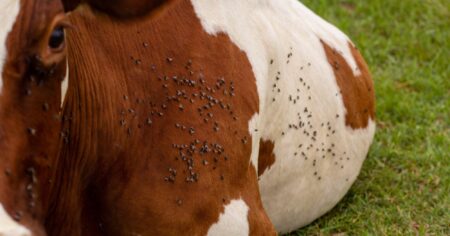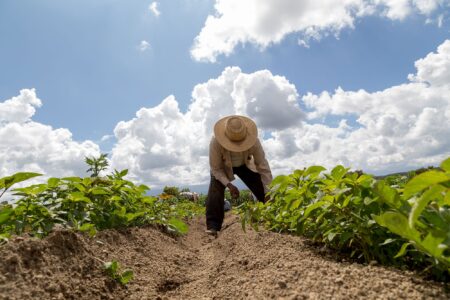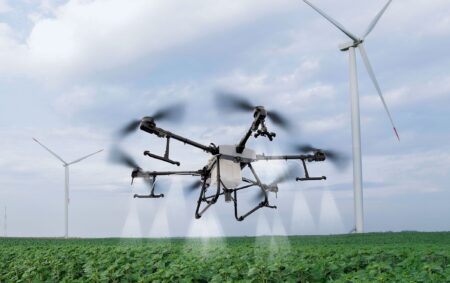By Morgan Chilson
TOPEKA — The head of the USDA said the agency would roll out a relief plan for the country’s agriculture sector in December, offering potential good news in a year of uncertainty for Kansans.
Secretary Brooke Rollins did not give details about the plan but indicated the USDA has been analyzing and building a “formula” around the current situation, Bloomberg News reported.
That situation includes the effects of tariffs and trade policy, the lack of a farm bill and the high cost of inputs, factors that are making it difficult for Kansas farmers and ranchers to plan for the future.
Crop farmers and cattle ranchers in the Sunflower State have shared vastly different experiences this year, according to a Kansas State University professor and economist.
Across the board, the agriculture industry has experienced general inflationary pressures on production expenses, said Jennifer Ifft, Kansas State University extension specialist on agricultural policy.
“But once you get beyond that, I think this year, more than ever, you really have to look at crops and livestock separately,” she said on the Kansas Reflector podcast. “The beef cattle prices are high, historic highs for the cow/calf side. They’re finally making money after some pretty long rough spells.”
However, crop farmers are seeing low prices and high expenses, Ifft said, along with weather pressures.
Kansas’ net farm income looks good, a measure that Ifft likens to the gross domestic product because it incorporates revenues and expenses from crops and livestock.
The Fall 2025 Farm Income Outlook for Kansas, a study completed by Kansas State University and the University of Missouri, shows an 88% increase in Kansas net farm income in 2025, while it also projects a slight decrease in 2026.
Net farm income swings quite a bit, going down to $2 billion and up to $9 or $10 billion, Ifft said.
The 88% increase this year can be tied to strong beef cattle prices and also to government payments made in 2025 but attributable to 2023 and 2024, she said.
“Those payments for 2025 are mostly disaster payments, either for low profitability for crop farms or disaster payments, and those cover losses from 2023 and 2024,” she said. “You can see much smoother income if you assign those payments into the year that loss was incurred.”
However, that’s not the way net farm income is measured, she said. The value of determining net farm income is that it always incorporates the same factors, giving a measurement that is easily comparable year over year.
Projections for decreased net farm income in 2026 are tied in part to uncertainty about government payments, Ifft said.
“Government payments are projected to come down,” she said. “We don’t guess about programs that we don’t know about. It’s only about what we know about today.”
Kansas crop receipts are projected to rise by about 8%, or $559.18 million in 2025, with increases expected across all the major commodities despite lower prices, the report said.
“This is because yields are estimated to recover from recent lows as the state recovers from persistent drought,” the report said.
Cash receipts for cattle and calves are expected to be up 24%, or $3.54 billion for a total of $18.33 billion in 2025, the report said.
Overall, the state is projected to see total crop and livestock receipts and government payments increase $6.52 billion in 2025, of which livestock and crop receipts account for 58% and 9% of the change, respectively, the report said.
As farmers plan for the upcoming year, policy uncertainty challenges them to make decisions, and many would like to see the farm bill move ahead.
Although Ifft calls farmers and ranchers the best risk managers around, failure to pass a long-term — typically five years — farm bill makes it difficult to plan. Crop insurance and other programs they depend on are included in the farm bill, she said, whereas ad hoc payments, such as for disasters, are part of the farm safety net and aren’t something that can be incorporated into farm planning.
She gave an example of a crop producer, making decisions in mid-November for the upcoming year. Many have already paid for some of their inputs, such as seed, for the coming year.
“If you pay early, either in cash or through early financing, you can usually get a lower price. It’s a farm management strategy,” she said. “Let’s say your crop producer margins are tight this year, but that there’s some advantage to prepay. You have to work with your lender.”
But the federal government has been talking about $12–15 billion of trade aid for crop producers, which could help pay for those inputs.
“You have to make this risk management decision, which, again, it’s very personal, no right or wrong,” Ifft said. “Do you ignore that you could be getting a substantial payment, maybe in a month, maybe in six months, and make that decision, or do you hold on, wait?”
Ifft and her K-State colleagues offered a webinar this year about farm management in the era of ad hoc payments, how to take into account these uncertain payments and how to use them to better position your operation in the coming years, she said.
Ifft said K-State is offering agricultural profitability workshops throughout the state, in collaboration with commodity organizations and others. The workshops are for producers and focus on the difficulties of “tighter margins and tougher decisions.”
Kansas Reflector is part of the States Newsroom, a network of similar news bureaus supported by grants and a coalition of donors as a 501c(3) public charity.


:max_bytes(150000):strip_icc()/stockyard-Dodge-City-2048x1536-38bcd3b2f08648cfa8aa180ac360fd5c.jpg)
:max_bytes(150000):strip_icc()/49035871198_32f490cc96_o-2dbf8dbc3ee749898c1ad90bb6214cb3.jpg)




:max_bytes(150000):strip_icc()/54163679242_59f748f514_o-0de4af3a868e41c08311efbeff9d9d99.jpg)
:max_bytes(150000):strip_icc()/49036364491_a2bb4f97cf_o-a38e1cdff3a343749dfe125fa53df257.jpg)

